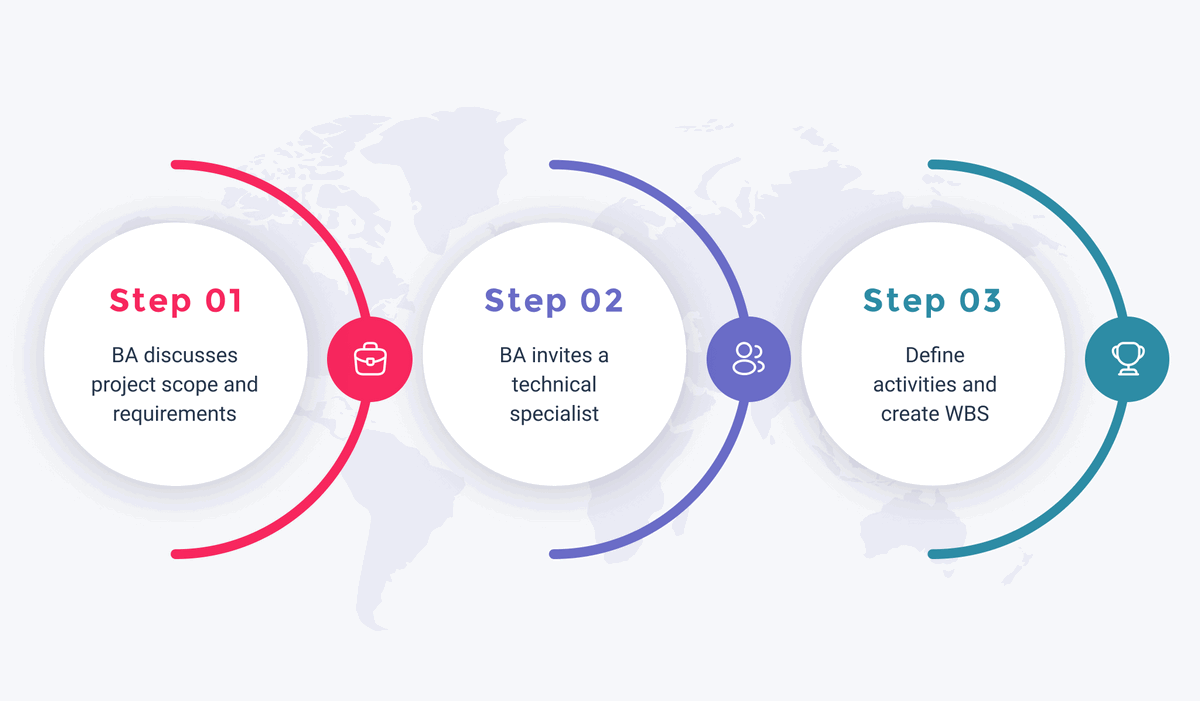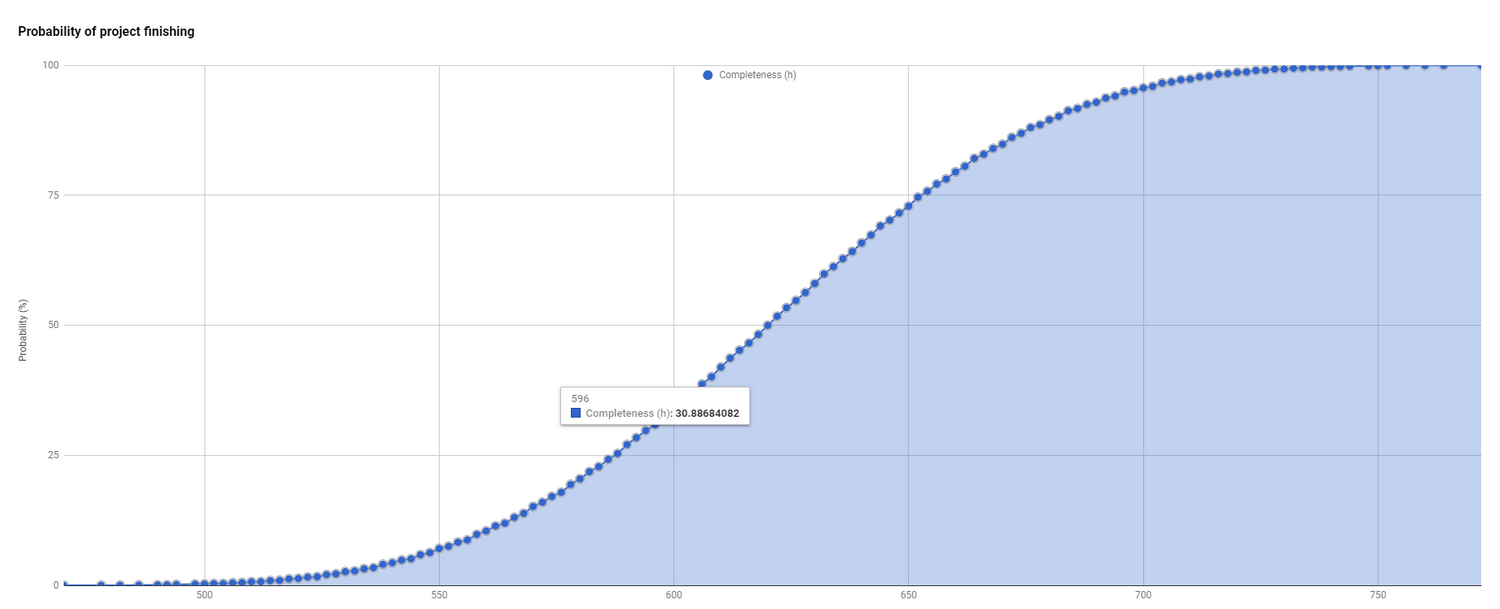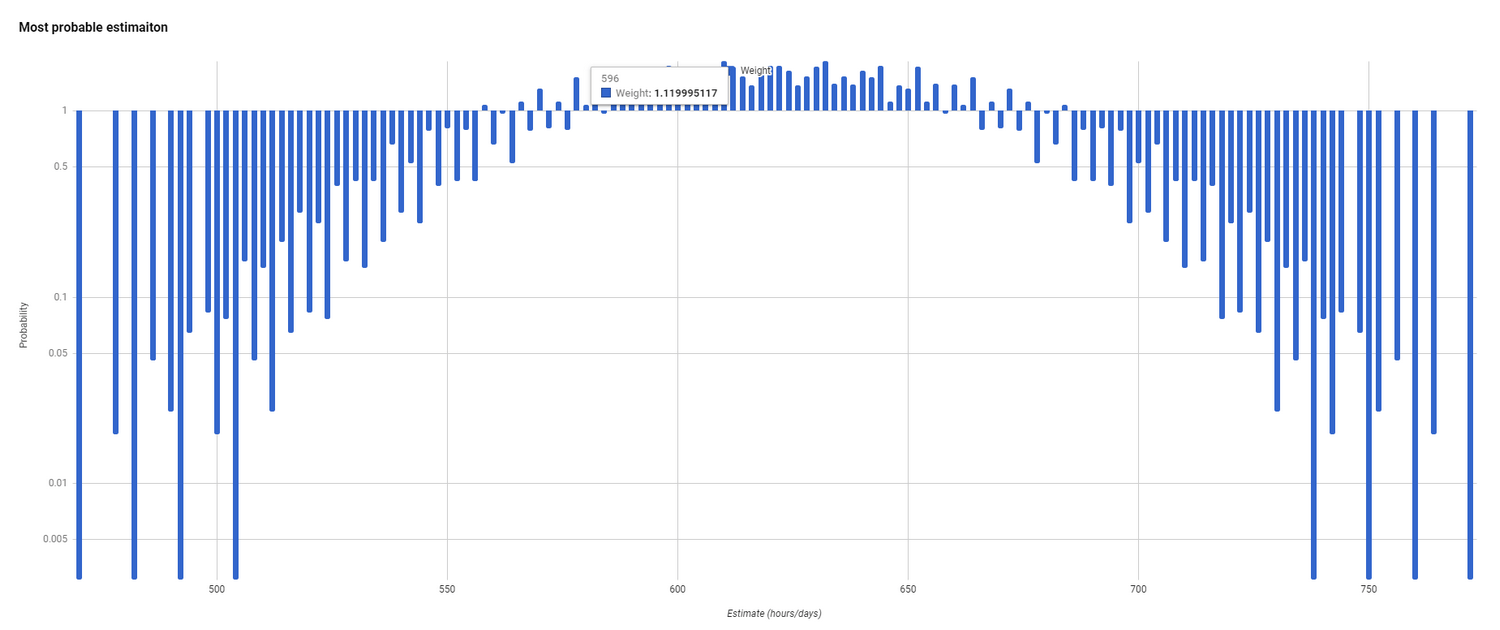During the project management life cycle (PMLC), there is a lot that your team should do to develop the solution you need. One cannot take the process lightly. We even explained the entire project management life cycle in detail in order to understand which activities team members have to perform. If you work with an outsourcing company, the overall process is a bit different. It can be much easier, however in this case, it is important to decide on the type of contract you will sign with the new staff.
To help a business prepare for the process, we want to share our own experience. Providing outsourcing development services, we have been facing different requests and many of them were to develop a small project or improve some functionality under fixed-price contracts. Such IT projects usually take several months and all tasks are done sequentially, step by step. Nonetheless, it is vital to recognize why the phase of estimating the cost of such a project is one of the most important steps. Therefore, let’s know more about the general process of project cost estimation, get to know the fixed-price type of contracts better, and find out how to estimate the cost of a fixed-price project.
Project Cost Estimation: The Process of Predicting Quality and Price
Putting together a budget is easier when the whole team understands how all available resources will be allocated and which costs will be decided. Meanwhile, maximizing the project’s quality and scope can be challenging. This is when project cost estimation can sort these things out.
So, what is project cost estimation? This is the process of forecasting the cost of completing a project with a defined scope. In simple words, all financial (types of costs, including direct and indirect ones) and non-financial resources (from materials to labor) that your team needs in order to complete a project within a scope should be taken into account. Cost estimation in project management is the process that leads your team to the better preparation of a business plan and budgets and to successful project execution. It is also essential to recognize that this is an iterative process. The clearer project scope becomes and the more risks are identified, the more refined the process turns out.
Read Also Iterative Development vs. Incremental Development: Spotting the Differences and Choosing the Best
Methods of Cost Estimation in Fixed-Price Projects
Before choosing the fixed-price contract, you need to understand if it fits your requirements and your plans. And whether the company that will provide you with the custom software development services offers the signing of such a contract.
When you choose a fixed-price contract, it means that the payment amount will not depend on the resources or time expended by the contractor. The contractor will estimate the cost of the project in advance and agree to deliver the project within the fixed budget. The process of IT project cost estimation includes certain steps, and team members can use various methods along the way. Let’s see which steps our team usually takes to estimate the cost of a fixed-price project:
- A Business Analyst (BA) discusses a project scope and requirements. It is important to find out all requirements with stakeholders. Quality standards, deadlines, and risks should also be discussed. Thus, it will be easier for everyone to be on one side;
- Then BA invites a technical specialist. Such a specialist is most familiar with the specific nature of the project at hand. Engaging with them at the decomposition stage leads to better and more accurate results. It is also vital to decide how much time, labor, materials, and other resources are required.
- They define all the activities involved and create a work breakdown structure (WBS). The activity list includes determined and sequenced activities, identifiers, and a detailed description of each task to ensure that a team understands the work that should be completed. These specified activities provide a basis for project performance at all stages: estimating, scheduling, executing, and controlling.

These are some general steps that can be adjusted depending on the nature and complexity of a project. We also usually use some project management tools that help with the estimation process.
Read Also The Challenges of Project Estimation: Exploring the Variations
During these phases, our experts follow different methods and techniques for project cost estimation. It all depends on the level of detail, availability of data, accuracy, project characteristics and complexity, as well as project manager’s preferences. There are no major or minor techniques, each of them has its own advantages and disadvantages, and depending on the project, these methods can be used in different combinations.
Overall, there are many methods, and they are known as Parametric estimating, Analogous estimating, Bottom-up estimating, Three-point estimating, Expert judgment, Top-down estimating, Project Management Information system (PMIS), Decision-making model, Delphi method, Vendor bid analysis, and Reserve analysis.
Let’s see which methods our experts usually combine to better plan and control financial resources of a project:
- Expert judgment. This technique provides the information of the estimation based on the knowledge we gathered from our prior projects.
- Analogous estimating. As for this method, it uses parameters such as technology, size, complexity, etc. from previous, similar projects, as the basis to estimate the same parameters for the current project. We use this type of estimation when there is a limited amount of detailed project information.
- Bottom-up estimating. In this case, a project is broken down into deliverables and the cost of each one is estimated individually. The assessment starts from the lowest level and goes up. The sum of estimations of the tasks shows the total cost and duration of the project.
- Parametric estimating. This model uses a statistical relationship between historical data and other variables to estimate activity parameters. It requires reliable data and valid assumptions.
Read Also Project Scope Management in IT Projects
Switching Between Methods After Determining Min and Max Duration Periods
Considering that during the cost estimation process a team can use different estimation methods, it is essential to know when it is better to switch to another method. Let’s see the example when our team can switch to the three-point estimate technique.
To understand why the switching can occur on the first place, one needs to know that any activity estimate as a rule has two values:
- Minimum duration (Min) – the number of time periods required to complete the activity if everything is going as expected.
- Maximum duration (Max) – the number of time periods to complete the activity if some risks arise. Unfortunately, sometimes an activity implementation may bear risks, such as using the API of an external tool, ambiguity of using a better tool, providing API of other developers involved in the project, etc.
Min and Max duration periods are equal if there are not any known risks. By identifying Min and Max duration periods, we can get some time intervals showing how much time the project will take. For example, the project completion takes from 100 hours to 150 hours (100h if no risks arise, and 150h if the foreseen risks arise).
The most probable project duration helps to create development forecasts and make further plans. After our team identifies both Min and Max duration, there are two possible routes that we can take:
- If there are several duration periods of equal probability, then we analyze them anew to select only one;
- If there are many most probable duration periods, we use a three-point estimate model originated from the Program Evaluation and Review Technique (PERT).
We use a Three-point estimate technique to define an approximate range of activity duration: most likely, minimum (optimistic time), and maximum (pessimistic time). According to the PERT analysis, we calculate an expected activity duration using this formula:
Expected time = (min + 4*“most likely” + max)/6
The resulting estimate is the precise number. During the project execution, the estimate allows measuring project progress against the time baseline and making forecasts.
PERT, on the other side, is similar to the Expert judgment method, but the technical specialist, in turn, gives not one, but three assessments: the most probable, pessimistic, and optimistic. We choose this method to adjust the most probable estimate considering the number of risks associated with the task. If the pessimistic assessment doesn’t differ much from the most probable one, the technician doesn’t see the significant risks associated with it. For example: if the most likely estimate is 1 week, and the pessimistic estimate is 7 weeks, it will mean the task has serious risks.
When It’s Finally Time to Calculate the Costs
The estimate is considered ready when you fully gathered all the needed details and analyzed them. The next step is to calculate the project cost derived from the following:
- Provided estimate. This is the most likely project duration or the precise number of PERT analysis.
- Business analysis and project management. This is basically the allowance for managing project scope and changing requests to avoid scope creep and provide expected delivery on time and under budget. Depending on the provided initial project scope and understanding deliverables, business analysis, and project management take between 10% and 30% for small projects.
- Contingency reserves. The allowances for unplanned but potentially required changes that can result from the realized risks. The amount of contingency reserves depends on the foreseen risks, project environment, etc. There is no ordinary amount of contingency reserves. Some projects have 0%, but some have more than 10% of the provided estimate.
- Cost of quality. They include the costs that cover the appraisal of the product with respect to conformance to requirements and costs incurred over the life of the product by investors in an attempt to remove nonconformance to requirements. The total price of quality is dependent on the list of requirements and provided by QA specialists. For example, speaking about web development, we should remember that the more browsers and devices we support the higher prices are.
- Management reserves. This is a budget reserved for unplanned changes that can happen to project scope and cost. The amount of management reserves is based on how much the provided project scope, openness, communication quality, etc. are completed. They are usually around 5%, more rarely over 10%.
To understand better how the costs can be estimated, we will show an example of using PERT for a fixed-price project. Let’s imagine that we have a project with the following estimated activity duration:
- Most likely development estimate – 335h
- Business analysis and project management – 72h
- Contingency reserves – 34h
- QA estimate – 99h
- Bug fixing – 26h
- Management reserves – 30h
According to PERT, the expected fixed-price project duration is 596 hours (335h+72h+34h+99h+26h+30h) and results in a product with a free 6-months bug fixing warranty period. To understand if this estimation is beneficial, let’s look at these two likelihoods: Completeness and Probability.
Completeness shows the possibility of completing the project for a fixed price within up to 596 hours. We can see that this is basically only 30.88% that the project will be finished during the set period. And the less time a customer will expect from a vendor, the less chance a vendor will have to complete a project. It means that there is a 69% chance that this time won’t be enough resulting in a client and a vendor having issues with each other. Even if these 30% become reality, most likely the client overpays.

As for the Probability, it shows the likelihood of finishing the fixed-price project in exactly 596 hours, not more, not less. If we look at the sheet below, we see that the outcome is possible only for 1.12%. As for the other possibilities of completing the development of a product, which aggregate probability is 98,88%, a client overpays or a vendor isn’t able to finish the project on time.

As a result, we see that there may be issues with costs and meeting deadlines. Following the PERT model is simple, however, it may not be a perfect option, because it doesn’t show possible alternative project costs and deadlines. It can also lead to missing the said deadlines.
Therefore, in some cases, it may be better to use other development approaches to avoid these issues. For example, you may choose to turn to the Time and Materials contract instead, because:
- it can save you about 10% of the price due to omitting contingency and management reserves;
- you will not overpay if the actual hours spent are underestimated, and your deadlines won’t be put off if the actual hours spent are overestimated.
In the case of choosing the Time and Materials contract, you will pay for actual hours spent on the implementation of your tasks. As you can see in our example, the probability of your overpayment is almost 30% (30,88% – 1,12% = 29,76%). And, the probability of putting off the deadline is 69,12%
Every vendor uses those estimation methods and strategies that are suitable and beneficial for their projects. Each case is unique, so we communicate with our clients to bring out all details to the surface and decide on the best solution.
It is better to know how the process of cost estimation is done and see its pros and cons to make the best choice in your situation. In case you have doubts about Fixed-Price or T&M contracts, maybe turning to a Budget with Float Scope contract will be even better for you.
Read Also Cannot Decide on the Right Type of Contract? The Answer Can Be Found Easier Than You Think
Conclusions
A lot has to be done before you sign a contract with a company that will provide you with the services you want. Both sides need to perform different activities, gather information on a project, and be sure that the communication between your business and a contractor is not broken. Opting to the fixed-price contract is not everyone’s cup of tea, so if you want to work under this exact type of contract, you need to prepare meticulously and to clarify with the vendor the probability of finishing the development process exactly in the estimation provided (this information can be found in the Probability chart) and the possibility to meet the deadline (this information can be found in the Completeness chart). Having this information on the table, you can make wise decisions.
If you want to know more about the services we provide and which type of contract we can offer for your particular project, please contact us, and our experts will provide you with all the needed information.